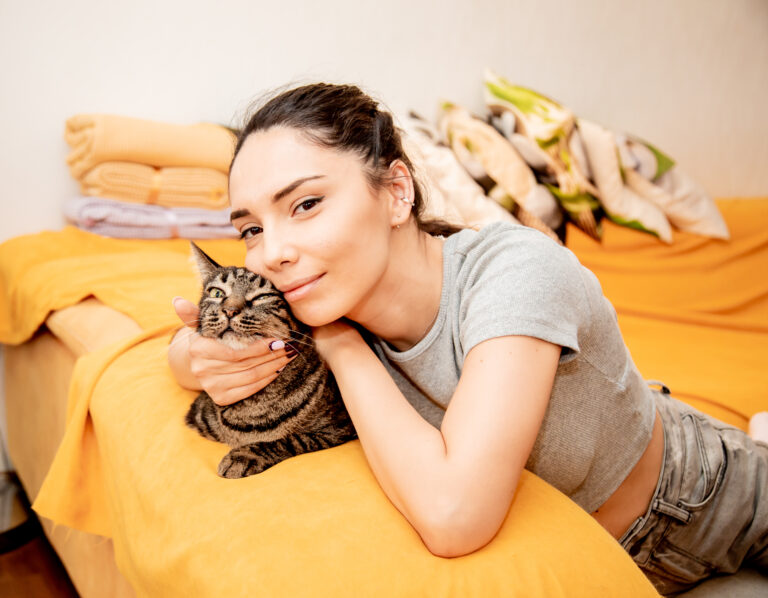In fact, Is Cat Insurance Worth It? Cost-Benefit Analysis Nationally for the Pet Owners
As an owner of a pet, your mind is always thinking about ways to make sure that your cats are healthy and well cared for. When it comes to unexpected veterinary charges that can hurt your finance’s balance, they are real parasites. Well, cat insurance could work as a safety net, but only in terms of cost-benefit analysis-would it be really worth the investment? This cost-benefit analysis has helped all the USA pet owners figure out whether it’s a smart choice to get cat insurance for furry kids.
What is Cat Insurance, Exactly?
Pet insurance designed to protect your feline friend’s medical expenses is often referred to as cat insurance. Depending on the plan, policy may cover:
Accident (e.g., injury, poisoning)
Illnesses (e.g., infections, chronic conditions)
Surgeries and hospitalizations
Preventive care (optional add-ons for vaccinations, wellness checks, etc.)
By paying monthly or annual premiums, you’re protected from large, unexpected vet bills, ensuring your cat gets timely and high-quality care.
The Costs of Cat Insurance
The cost of cat insurance varies based on several factors:
Monthly Premiums:
Range from $15 to $50, depending on coverage, deductible, and reimbursement rate.
Deductibles:
Most plans require you to pay a deductible (e.g., $100-$500) before coverage kicks in.
Reimbursement Rate:
Insurers typically reimburse 70% to 90% of eligible expenses after the deductible is met.
Annual Coverage Limit:
Some plans cap payouts at $5,000, while others offer unlimited coverage.
Additional costs might include wellness coverage add-ons or increased premiums for older cats.
Common Veterinary Expenses in the USA
To understand the value of cat insurance, let’s look at the potential veterinary expenses:
Emergency Care:
Treating a broken leg: $1,500 – $3,000
Foreign object removal surgery: $3,000 – $7,000
Chronic Conditions:
Diabetes management: $2,000 annually
Kidney disease treatment: $3,000 – $5,000 annually
Routine Preventive Care:
Vaccinations: $100 – $200 annually
Dental cleaning: $300 – $800
Cancer Treatments:
Chemotherapy or radiation: $4,000 – $10,000
Without insurance, these costs can add up quickly, leaving many pet owners financially overwhelmed.
The Benefits of Cat Insurance
Financial Security:
Protects against unexpected and costly veterinary bills.
Access to Advanced Treatments:
Allows you to pursue cutting-edge treatments, such as MRIs, surgeries, or specialized therapies.
Peace of Mind:
Reduces stress by knowing you’re prepared for any medical emergencies.
Customizable Coverage:
Tailored plans let you choose what suits your budget and your cat’s needs.
Better Health Outcomes:
Encourages proactive care, including preventive measures and early diagnosis.
The Drawbacks of Cat Insurance
Exclusions:
Pre-existing conditions, elective procedures, and some hereditary conditions may not be covered.
Out-of-Pocket Costs:
You’ll still need to pay upfront for vet bills and wait for reimbursement.
Premium Increases:
Monthly premiums may rise as your cat ages or if you file multiple claims.
Not Always Cost-Effective:
If your cat remains healthy, you might pay more in premiums than you would in vet bills.
When is Cat Insurance Worth It?
Cat insurance offers the most value in specific situations:
Young Cats:
Insuring your cat early often results in lower premiums and ensures coverage before health issues arise.
High-Risk Breeds:
Certain breeds, like Persians and Maine Coons, are prone to hereditary conditions that can be expensive to treat.
Outdoor Cats:
Cats with outdoor access are more likely to encounter accidents or injuries.
Emergency Preparedness:
If you want to avoid financial stress during emergencies, insurance can be a lifesaver.
Cost-Benefit Analysis: Is Cat Insurance Right for You?
Scenario 1: Healthy Cat
Premium Costs: $360 annually
Vet Bills (Routine Care): $200
Total Annual Cost: $560
Reimbursement: Minimal if no emergencies occur.
In this case, you might spend more on premiums than you save in vet bills.
Scenario 2: Emergency Surgery
Premium Costs: $360 annually
Vet Bills (Emergency): $5,000
Reimbursement (80%): $4,000
Out-of-Pocket Expense: $1,360 (including deductible)
Here, insurance saves you thousands of dollars.
Scenario 3: Chronic Condition
Premium Costs: $360 annually
Vet Bills (Chronic Treatment): $2,000 annually
Reimbursement (80%): $1,600
Out-of-Pocket Expense: $760
Over time, insurance makes managing chronic conditions more affordable.
Alternatives to Cat Insurance
Pet Savings Account:
Set aside money each month for potential vet expenses.
Discount Plans:
Some providers offer discount memberships for veterinary services.
Wellness Plans:
Pay for routine care packages directly through your vet.
While these options can be helpful, they may not provide the same level of financial protection as insurance during emergencies.
How to Choose the Best Cat Insurance Plan
Compare Providers:
Research USA-based companies like Healthy Paws, Figo, ASPCA Pet Insurance, and Embrace.
Understand Coverage:
Review what’s included, excluded, and optional.
Consider Costs:
Balance premiums, deductibles, and reimbursement rates.
Check Reviews:
Look for customer feedback on claim processing and overall satisfaction.
Assess Your Cat’s Needs:
Age, breed, and lifestyle should influence your decision.
Final Thoughts
Cat insurance can be a valuable investment, especially for pet owners who want peace of mind and financial protection against unexpected veterinary costs. While it may not always be cost-effective for every cat, the benefits often outweigh the drawbacks in emergencies or long-term care scenarios.
Evaluate your cat’s health needs and your financial situation to decide whether insurance is right for you. By doing so, you’ll ensure your furry friend receives the care they deserve without breaking the bank.





